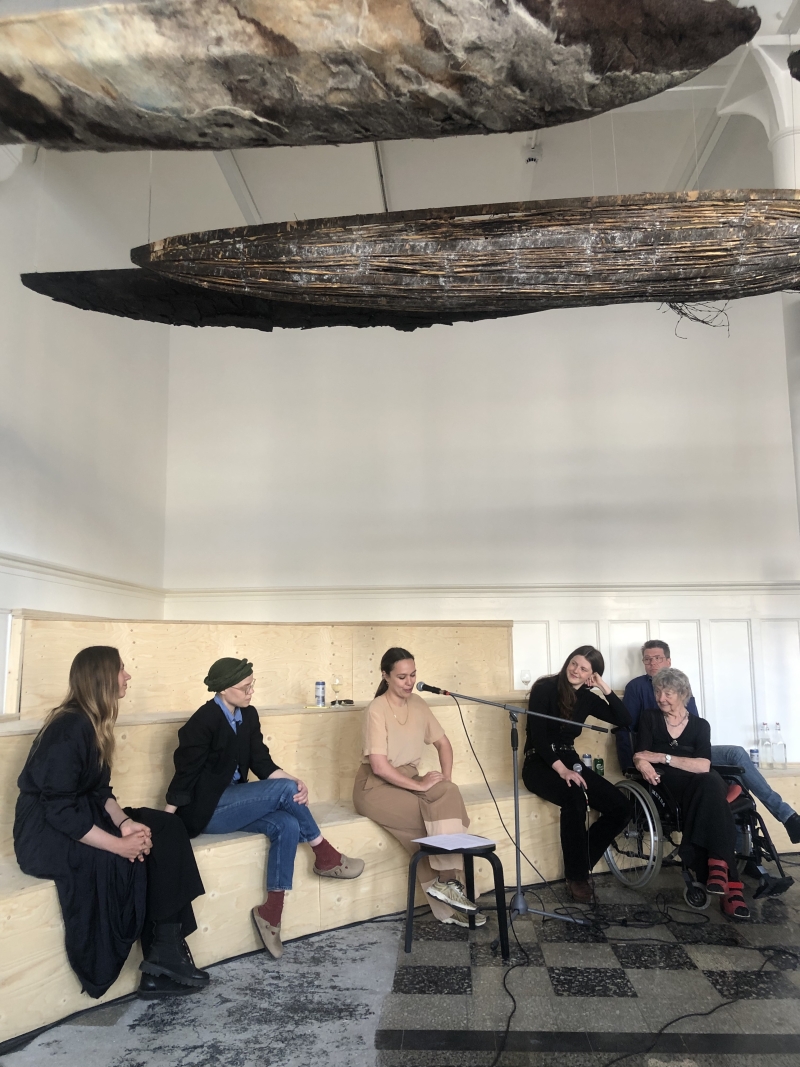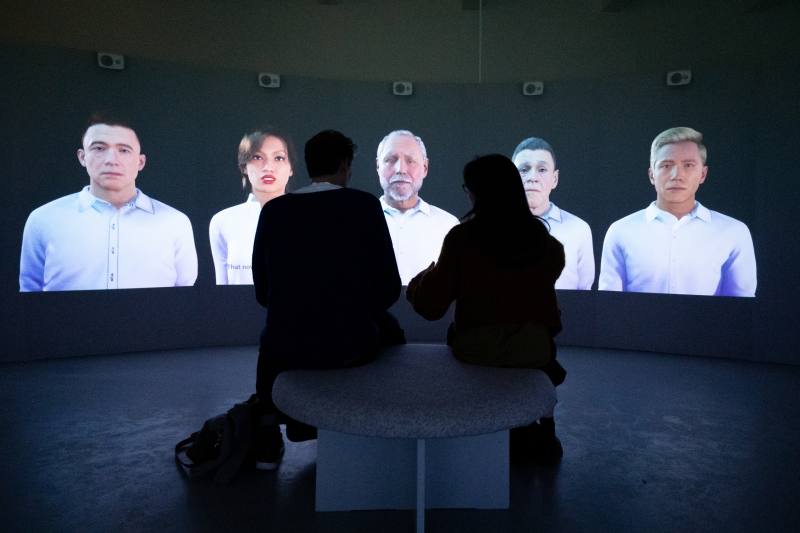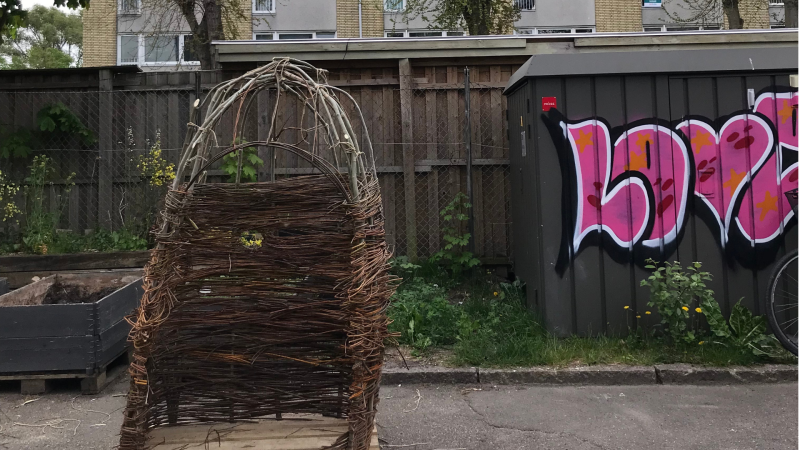Artist and weaver Annette Holdensen’s large woven willow installation was part of Overgaden’s very first exhibition in 1987. Holdensen returns for a presentation of their oeuvre, which has been singular in Danish contemporary art, creating a space for craftsmanship through weaving combined with an experimental attitude towards sculpture.
At a time when textiles have gained renewed popularity in the art scene, O—Overgaden focuses in on one of the pioneers who has insisted on securing textile a firm place firm place in contemporary art. The artist Annette Holdensen, now 87 years old, participated in O—Overgaden’s inaugural exhibition when it opened as an exhibition venue in 1987, with the work Willow Monoliths. With the very same work, and a multitude of boats and dimensional tapestries, she revisits the column galleries in a new retrospective exhibition, demonstrating how Holdensen has brought weaving into a sculptural sphere.
Sustained by a feminist outlook, tapestry weavers’ collectives, and an erotic curiosity, Annette Holdensen describes her practice as “wild, warm, and cautious”. Instead of keeping her weaving within a strictly defined area, she began in the 1960s to soften the regularity of the textiles and blur their flat format. After having experimented with erotic crevices and frayed ends in her tapestries, her transformation of the two-dimensionality of the textiles culminated in the mysterious black sculptures Witches’ Coats from 1983, featuring bristly hairs, pockets, and plaits. Similarly, she initiated a sculptural development of her weaving by using wickerwork in Willow Monoliths, in which anthropomorphic figures stand in a circle looking towards the viewer as in a place of remembrance.
For more than half a century, Holdensen has worked to transform a multitude of materials – such as wool borrowed from a local sheep shearer, fabric remnants from clothes factories, willow, friends’ chest hair and beards, ponytails, dog hairs, and eel skins – into spatial shapes that appear sombre while, at the same time, acting as cocoons in which to screen oneself from the world. Since textiles have always been used as a shield and protective layer for the body, Holdensen’s works facilitate a reflection on the things we use to protect ourselves but often take for granted.
On occasion of the exhibition, O—Overgaden has embarked on a substantial collaboration with Amagerbro Helhedsplan, Fabrikken for Kunst & Design, and Amager Fælled Skole, to invite young people from socially deprived areas to create woven willow caves inspired by Holdensen’s works for Øslegads playground, near O—Overgaden. The collaboration also includes willow weaving instructor Jette Mallgreen.
Annette Holdensen (b. 1934 in Sneum, DK) has previously exhibited at the Berkeley Arts Center (US), International Minitextil (MX), the 6th International Triennale of Tapestry (PL), Anna Norlander Museet (SE), Trondheim Kunstmuseum (NO), Kunsten Museum of Modern Art (DK), and Brandts (DK). She is represented in several museum collections and is the recipient of the Danish Art Foundation’s lifelong grant.
Accompanying the exhibition is a publication of Annette Holdensen texts published by Laboratory for Aesthetics and Ecology.
This exhibition and the outreach program are made possible with the support of the Lemvigh-Müller Foundation, Danmarks Nationalbank’s Anniversary Foundation of 1968, Hoffmann og Husmans Fond, Det Obelske Familiefond and the William Demant Foundation.
![lemvigh.png]()
- Danmarks Nationalbanks Jubilæumsfond af 1968
![hoffmannhusman_logo2-blue.png]()
![william_demant_foundation_black.png]()


















